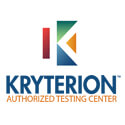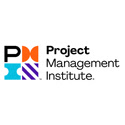Configuring Advanced Windows Server 2012 (70-412)
About This Course
The Configuring Advanced Windows Server 2012 certification course trains professionals to provision, manage, maintain and execute infrastructure and services in Windows Server 2012 domain. The course essentially prepares professionals for the 70-412 exam, which covers disaster recovery, failover clustering, active directory rights management, business continuity, network load balancing and active directory domain services.
Professionals will also learn about information access, protection and provisioning technologies like DAC (Dynamic Access Control), Workplace Join and Web Application Proxy integration.
Simply put, the course is designed for professionals to achieve adequate skills and knowledge to help them make apt decisions pertaining to configuring of advanced Windows Server 2012 services. This certification course is part three of a series of certification courses and validates advanced configuring functions to maintain, manage and deploy Windows Server 2012 infrastructure such as identity federation, fault tolerance, etc. The Configuring Advanced Windows Server 2012 course along with the other courses in the series helps to validate the essential expertise and skills required to implement, manage, provision and maintain infrastructure and services in Windows Server 2012 environments.
Who Should Attend This Course
The course is aimed at IT professionals to help them gain hands-on exposure and experience in administering, implementing and managing Windows Server 2012 environments.
It is ideal for anyone who seeks to achieve skills and knowledge required for carrying out provisioning and management of services within a Windows Server 2012 environment.
Why This Course
The course prepares you for the 70-412 exam, which covers failover clustering, disaster recovery, business continuity, active directory rights management, active directory domain services and network load balancing.
After successful Completion of the course, you achieve following:
- Configure DAC to help audit and manage access to the shared files
- Configure and implement Active Directory Certificate
- Configure advanced features in the DHCP
- Configure advanced DNS settings
- Implement certificate deployment
- Implement certificate revocation and distribution
- Implement Failover Clustering using Hyper-V
Course Objectives
- Prepare you for 70-412 exam
- Fault tolerance
- Identify federation
- Certificate services
- Network Load Balancing
- Failover clustering
- Managing Virtual Machine (VM)
- Advanced file services
- Dynamic Access Control (DAC)
- Optimizing storage
- Managing backups
- Recovering servers
- Advanced DNS solutions
- Configuring domains and trusts
- Configuring sites
- Active Directory management
- Installing Active Directory Certificates
- Managing certificates
- Active Directory Rights Management Services
Course Prerequisites
- Basic understanding and experience to administering a Server 2012 infrastructure in an enterprise IT environment.
- Experience with Windows Server 2012 or 2008
Course Benefits
After successful Completion of the course, you achieve following:
- Configure DAC to help audit and manage access to the shared files
- Configure and implement Active Directory Certificate
- Configure advanced features in the DHCP
- Configure advanced DNS settings
- Implement certificate deployment
- Implement certificate revocation and distribution
- Implement Failover Clustering using Hyper-V





























